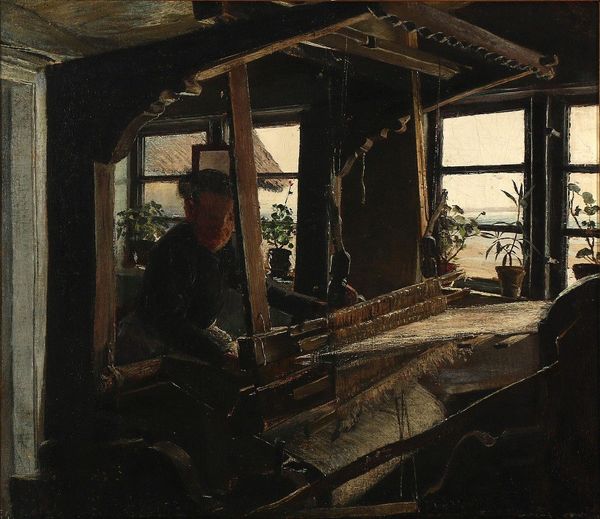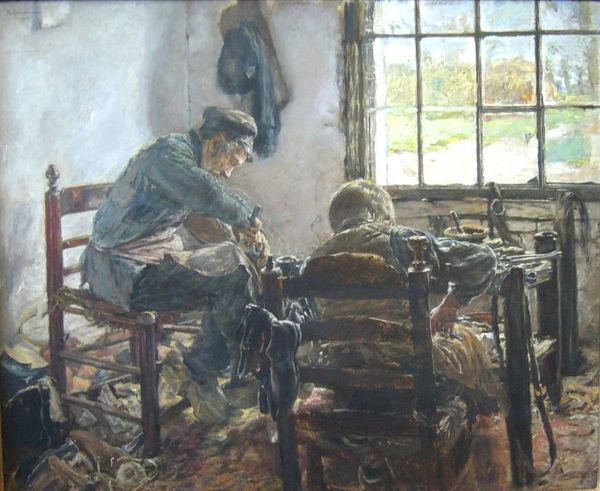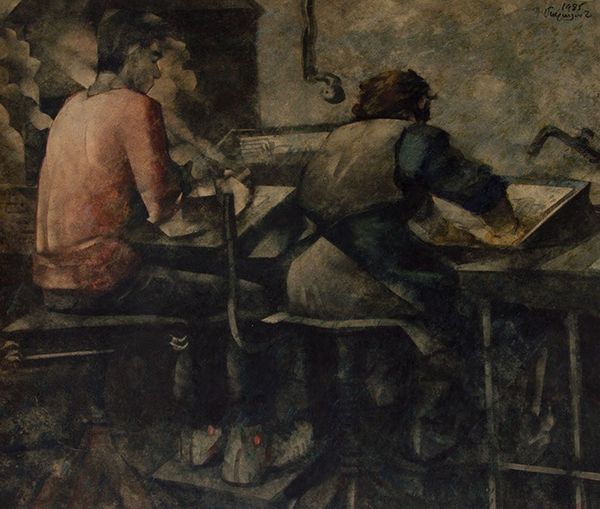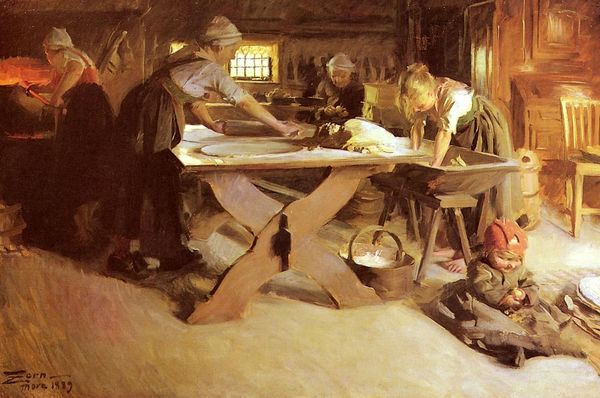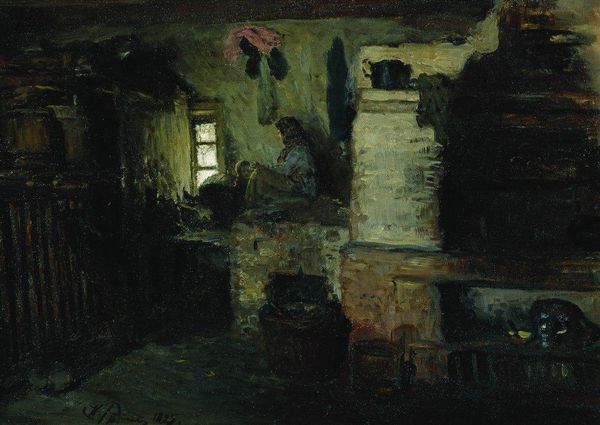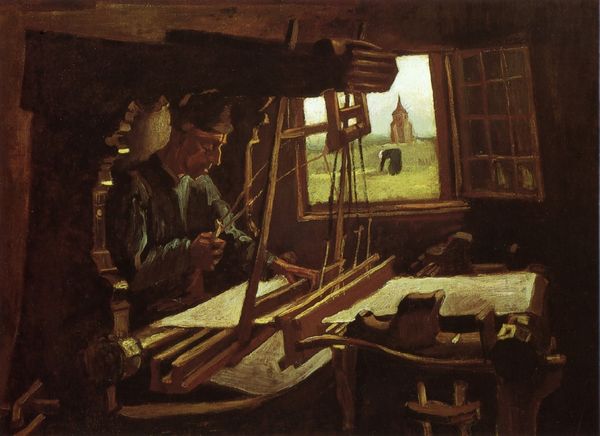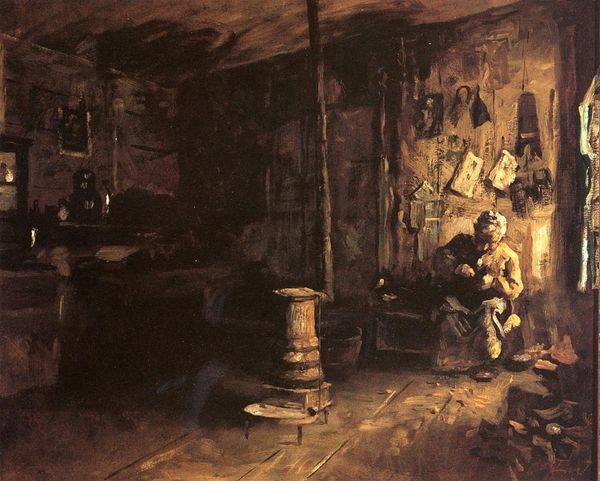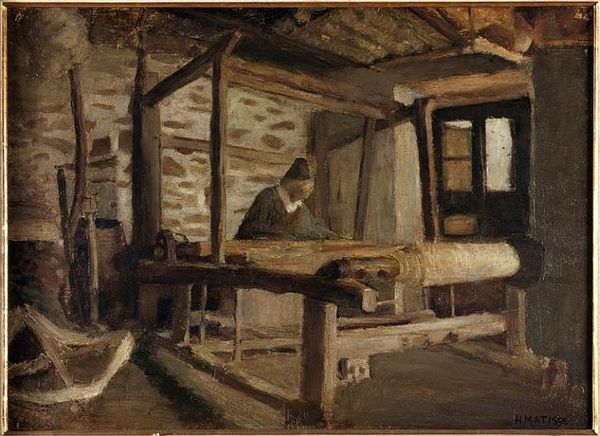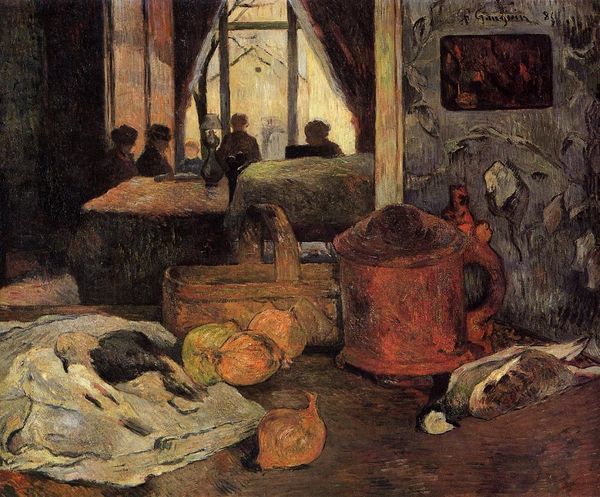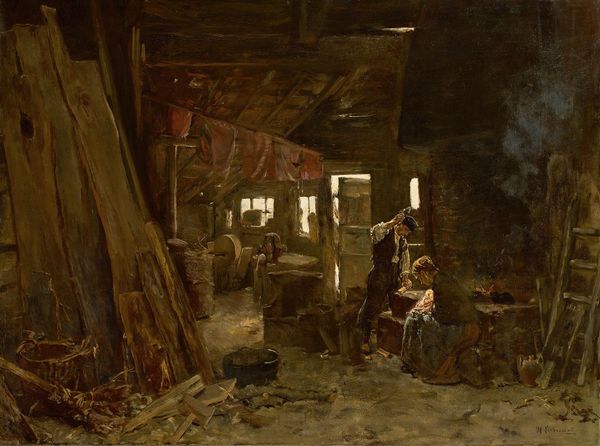
Copyright: Public Domain: Artvee
Max Liebermann painted "The Weaver" during a period of significant social change, capturing the lives of working-class artisans at a time when industrialization was rapidly transforming labor. Liebermann's painting brings the viewer into the intimate, yet laborious world of Dutch weavers. The focus on the workers highlights their physical engagement with their craft. The scene emphasizes the rhythmic, repetitive motions involved in weaving. The dark interior, lit by a few windows, creates an atmosphere of both intimacy and isolation. Liebermann, who came from a wealthy Jewish background, often depicted scenes of everyday life, showing an interest in the working class. This interest was both a reflection of his artistic concerns and the broader social concerns of the time. "The Weaver" is not just a depiction of labor, but a reflection on the human condition and the dignity of work in the face of modernization.
Comments
No comments
Be the first to comment and join the conversation on the ultimate creative platform.
